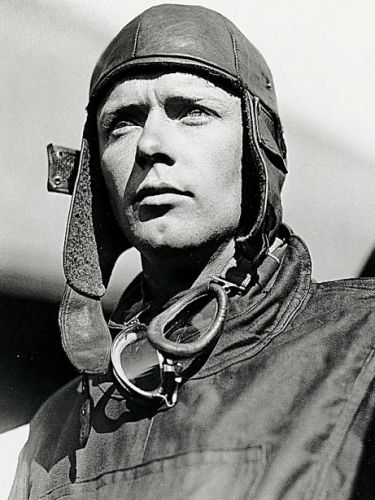
Charles Lindbergh.
Flying the mail one night, a young pilot concieved the amazing idea of flying across the Atlantic Ocean. Envisioning a day when Airpanes would regularly fly from continent to continent, he shared his vision with prominent St. Louis businessmen, who gave him financial backing.
Many doubted that he could do it, one aircraft company even offered to let him buy the plane, along with the services of their more experienced pilot, but Lindbergh and his backers stood firm.
The small Ryan Aircraft Company in San Diego, California offered to build his plane at a price Lindbergh's group could afford. Ryan's engineer, Don Hall worked with Lindbergh to modify one of their monoplane designs so that it would be able to carry enough fuel for the journey.
Lindbergh was able to draw around himself an amazing team, but he chose to fly alone. Taking off with the fully loaded Spirit of St. Louis, on May 20, 1927, he was glad to be able to make the decision without considering the safety of a crew. Gunning the engine, he pushed his plane down a muddy runway and, depending heavily on Hall's calculations, lifted the plane into the sky.
"About 7:40 A.M. the motor was started and at 7:52 I took off on the flight for Paris. The field was a little soft due to the rain during the night and the heavily loaded plane gathered speed very slowly. After passing the halfway mark, however, it was apparent that I would be able to clear the obstructions at the end. I passed over a tractor by about fifteen feet and a telephone line by about twenty, with a fair reserve of flying speed. I believe that the ship would have taken off from a hard field with at least five hundred pounds more weight. I turned slightly to the right to avoid some high trees on a hill directly ahead, but by the time I had gone a few hundred yards I had sufficient altitude to clear all obstructions and throttled the engine down to 1750 R.P.M. I took up a compass course at once and soon reached Long Island Sound where the Curtiss Oriole with its photographer, which had been escorting me, turned back."
For 33 1/2 hours, Charles Lindberg flew alone, from New York's Roosevelt Field to Paris' Le Bourget field. Technically, he forfeited his eligibility for the $25,000 Orteig Prize by taking off before officially sanctioned, but had he waited, other better financed teams would have likely made the trip before him.
On the evening of the 21st, Lindbergh landed in Paris and made history. His flight created great enthusiasm for aviation in this country. One young man's vision had ushered in the modern air age.




No comments:
Post a Comment